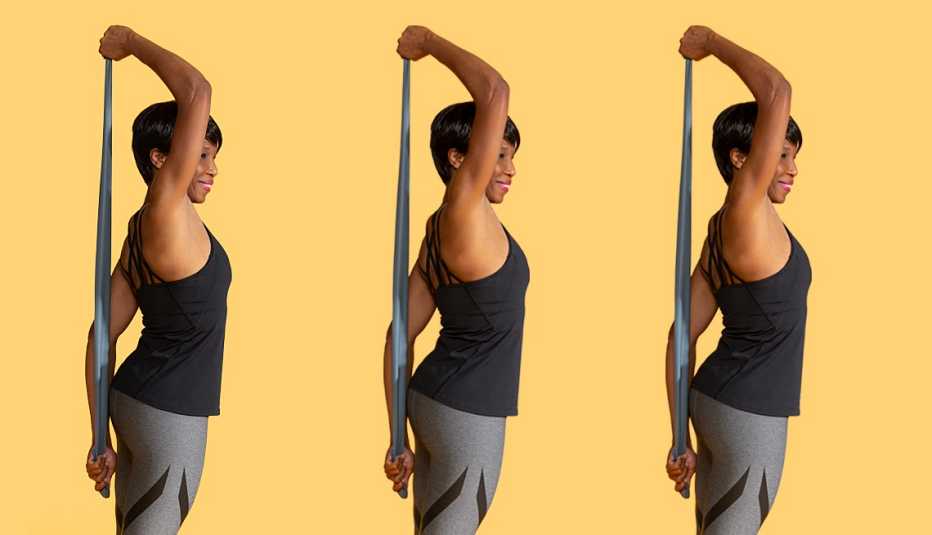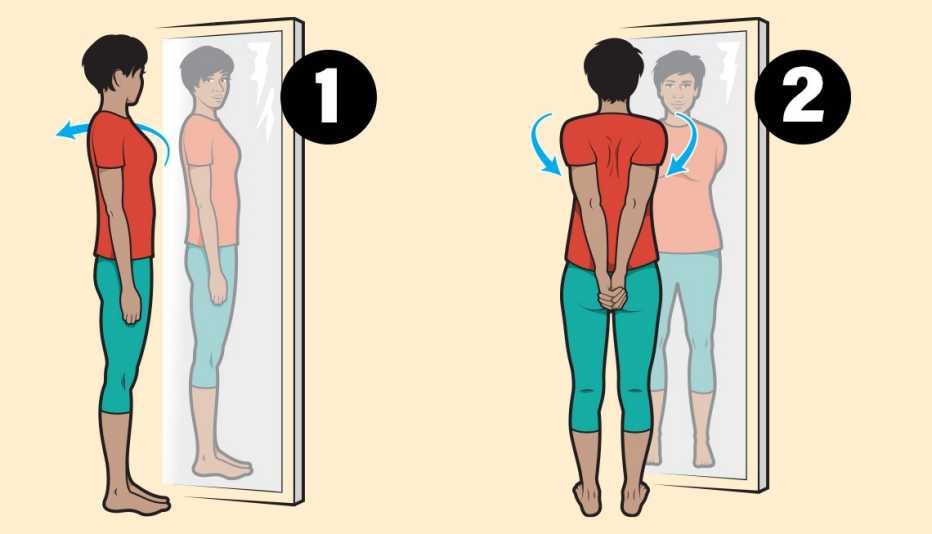Staying Fit


Good posture is an important part of long-term health, according to the National Institutes of Health. Slouching and slumping over can make your spine more fragile and prone to injury. Poor posture can also cause neck, shoulder and back pain. Here’s how to achieve perfect posture that would make your mother proud.
Part One
Stand so that your left side is adjacent to a full-length mirror. Imagine there is a straight line that runs down the side of your body from your ears through your shoulders, hips, knees and ankles. Turn your head slightly to see your reflection, or ask a partner to assess you. Now ask:


AARP Membership— $12 for your first year when you sign up for Automatic Renewal
Get instant access to members-only products and hundreds of discounts, a free second membership, and a subscription to AARP the Magazine.
Where are my ears?
They should be directly over your shoulders, not out in front. To bring your ears back: Lift the crown of your head toward the ceiling. Keep your eyes forward, jaw parallel to the floor. Pull your shoulder blades back, as though trying to touch them together.
Where are my hips?
Belly fat and too much sitting cause our hips to tilt forward. Tighten your stomach muscles; push your hips forward so the points of your hip bones are directly below your shoulders.
Where are my ankles?
When your head and belly are out in front and your hips are behind, your ankles will often wind up somewhere in the middle. Your ankle bones should be directly below your hip bones, for proper balance.
Part Two
Holding your newly aligned posture, turn to face the mirror. Ask yourself:
Where are my shoulders?
If one is higher than the other, roll your shoulders forward and back to loosen them. If one or both shoulders are forward, you may have tight chest muscles, which can cause you to hunch forward. To loosen up, clasp your hands behind you, interlocking your fingers, palms together. Lift your hands up and backward as far as you can. Hold for 10 seconds, then return to the starting position.


Where are my feet?
They should be shoulder-width apart and even with each other, toes facing forward. Often when our head and belly are out in front, we wind up walking (or waddling) with a wider stance. Shuffle your feet until they’re even with each other and no farther apart than shoulder width. Take a moment to feel how you’re balanced. Your weight should be distributed equally on both feet.
Where are my knees?
Tightness in the back can pull the knees out of alignment. Try this easy stretch: Stand with your big toes touching and your heels slightly apart. Fold forward at the hips, curl your chin to your chest, and let your arms dangle toward the floor.



































































More From AARP
Weight Loss After 50 Challenge
Learn how to lose weight and keep it off, and get delicious recipes at AARP® Staying Sharp®
5 Alternative Therapies for Pain
What the research says about whether other types of integrative care can provide relief
Exercises for Lower Back Pain
Strengthen the area and ease the aches